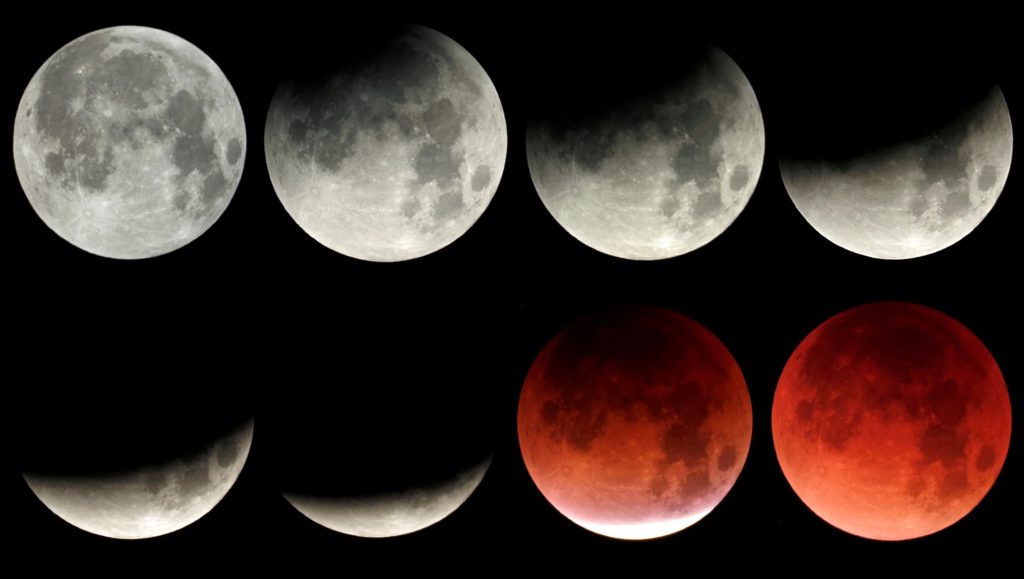
Image Credit: Stage of a lunar eclipse. Credit: Michael Beckage, January 31, 2018.
Flagstaff, AZ. – The longest partial lunar eclipse in more than 600 years happens in the early morning of November 19, and Lowell Observatory will make it available to everyone around the world with a livestream presentation. Join Lowell experts on November 19 at 12:15am MST (11:15pm PST, Nov 18; 1:15am CST, Nov 19; 2:15am EST, Nov 19) as they show live views of the event through telescopes while discussing the science of eclipses, the best ways to view them, Lowell’s history with the Moon, and much more.
Information, including an event link, is at http://lowell.edu/2021-lunar-eclipse
Background
Lunar eclipses occur only when the Moon is in its full phase, whereas solar eclipses take place only when the Moon is new. A full Moon happens when it is opposite the Sun, with Earth in between the two bodies. Thus, when the Moon is full, it will be rising on the eastern horizon as the Sun is setting on the western horizon. The bodies don’t usually line up exactly but when they do the Moon will pass into the shadow of the Earth. The result is a darkening of the Moon, or lunar eclipse. The deeper into the shadow the Moon moves, the greater the eclipse. If the entire surface of the Moon moves into shadow, then a total lunar eclipse occurs.
Chinese observers apparently made the first written record of a lunar eclipse in 1136 B.C., though eclipse mythology existed hundreds of years before this. Most early explanations for the phenomenon link back to stories of monsters and spirits of various forms. Other early observers noticed Earth’s shadow was crescent-shaped, proving that Earth is spherical. If it was flat, its shadow could not be crescent-shaped but would instead be straight.
Details of November 19 Eclipse
During a lunar eclipse, Earth’s shadow consists of two parts. The penumbra is the lighter, outside portion of the shadow and fairly difficult to detect. The umbra is the darker, central part of the shadow. Its appearance—starting at 12:18 a.m. MST on November 19—is far more prominent and, for most people, indicates the true beginning of the eclipse. The Moon will continue to move deeper into the umbra until 2:03 a.m. MST, when 97% of the Moon will be in the shadow of Earth. The Moon will then slowly brighten as it moves out of the umbra until 3:47 am MST, when it completely emerges.
Observers in North America and northeastern Asia will be able to see the entire eclipse, weather permitting. The event will be partly visible from South America, western Europe, and Australia.
This will be the longest partial lunar eclipse since 1440—a dozen years before Leonardo daVinci was born. The next one this long won’t happen until 2669.
During the Lowell Observatory livestream, staff experts will share images of the eclipsed Moon, as well as discuss the history of lunar eclipses and reveal the cultural connections with the Moon.
###
Contact:
Kevin Schindler, Lowell Observatory
(928) 607-1387